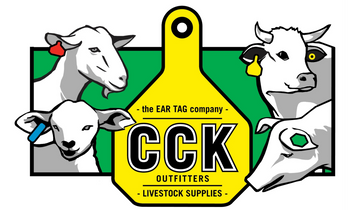UHF vs LF RFID Ear Tags: What Livestock Producers Should Know
May 21, 2025
Understanding the Difference Between UHF and LF RFID Ear Tags—And Why More Beef Producers Are Choosing UHF
At CCK Outfitters, we’ve provided Low Frequency (LF) RFID ear tags—such as HDX and FDX—for years. These tags have become a standard tool in livestock management, especially in dairies where individual monitoring is key. But with the rise of Ultra High Frequency (UHF) RFID technology, we’re seeing a shift—especially in the beef industry.
So what sets UHF tags apart, and why are more producers making the switch?
Key Differences Between LF and UHF RFID Tags
-
Tag Design
LF: Typically a round button tag. Producers often need to pair it with a separate visual tag—meaning two tags per animal.
UHF: Built into a visual panel tag, offering both visual ID and RFID tracking in one. It’s a true one-tag solution. -
Read Range
LF: Effective up to 18 inches.
UHF: Can be read from up to 50 feet away, drastically improving reading efficiency. -
Read Capacity
LF: Single animal reads—one at a time.
UHF: Supports multiple reads simultaneously, making it ideal for reading groups of cattle. -
Handling Requirements
LF: Requires close proximity—usually in an alley, chute, or head gate.
UHF: Can read cattle from a distance, even within a pen or trailer, reducing the need for animal handling.
Which Tag Is Right for You?
Both technologies serve a purpose. Dairies, which manage cattle on an individual basis, tend to stick with LF tags. But beef producers, who typically manage animals in groups, are finding UHF to be more efficient and cost-effective in the long run.
Although LF readers are not compatible with UHF tags (and vice versa), the benefits of UHF are becoming hard to ignore. The improved read range, one-tag convenience, and group reading capabilities make UHF an ideal solution for modern beef operations.
The Bottom Line
UHF tags are helping producers streamline livestock management with fewer tags, less stress, and better data collection—especially in group-managed settings. While LF will continue to play a role in individual tracking, the future of herd management is leaning UHF.
